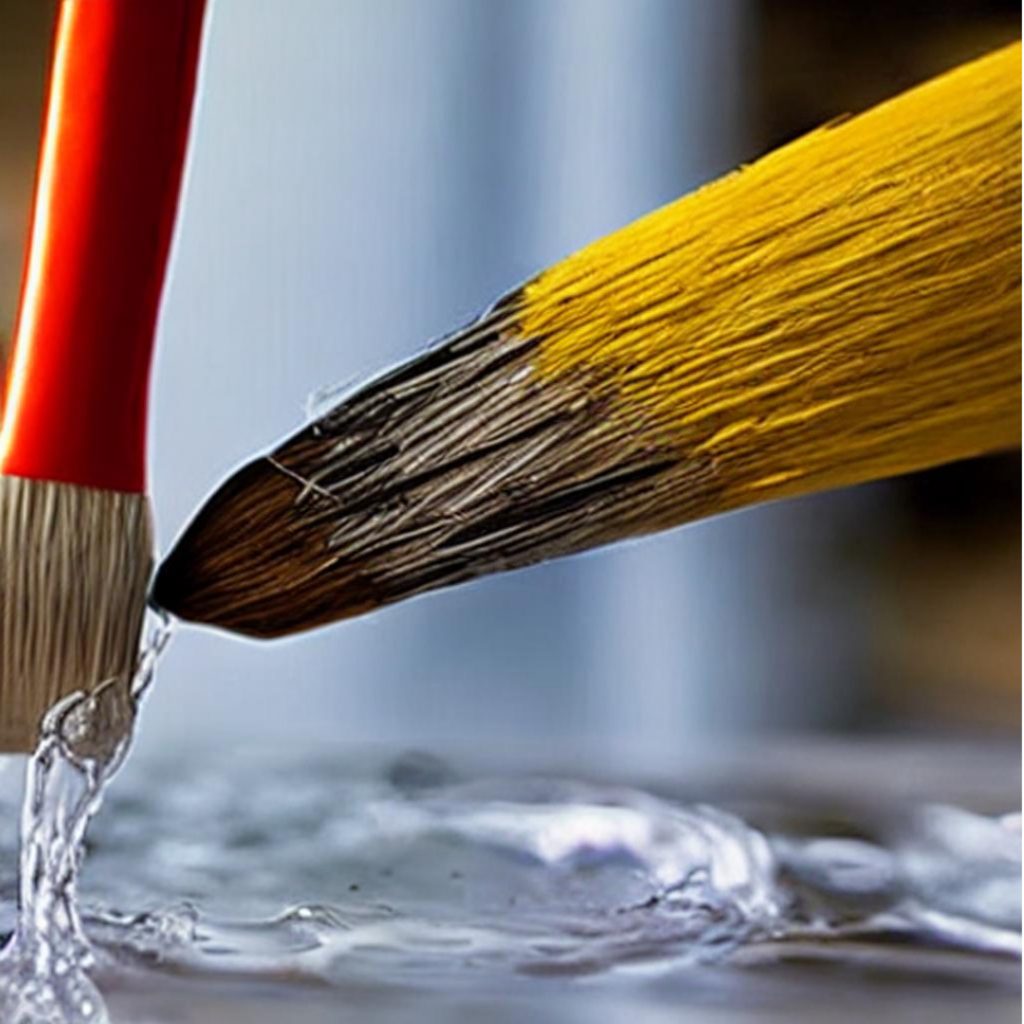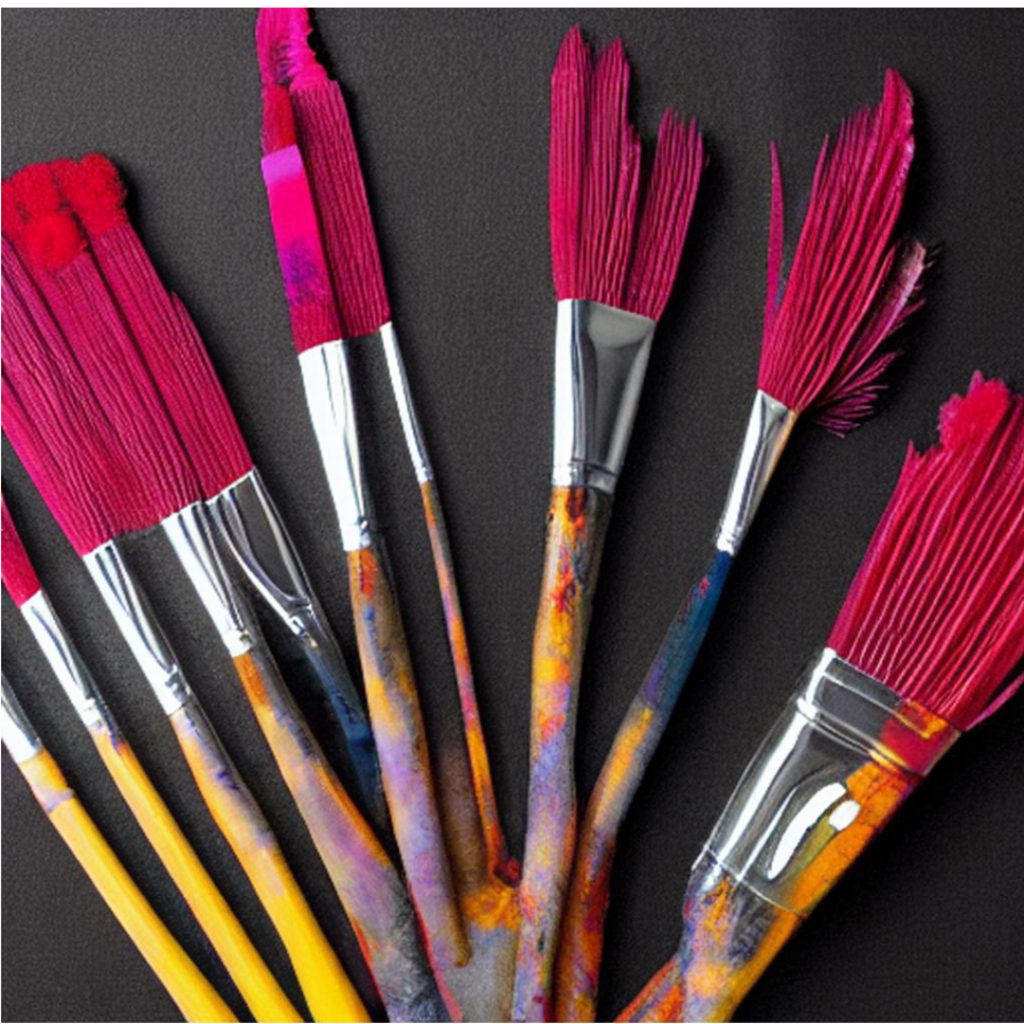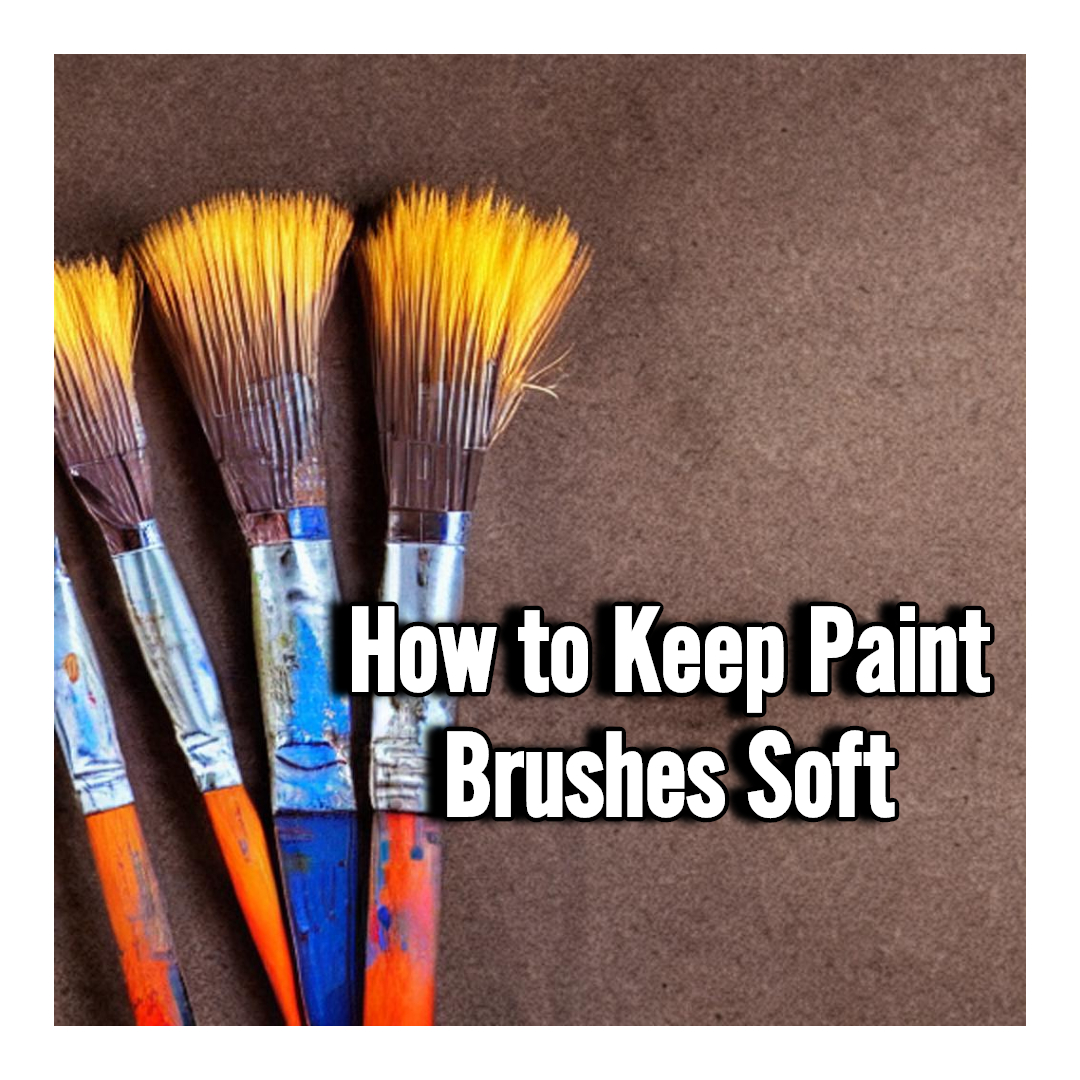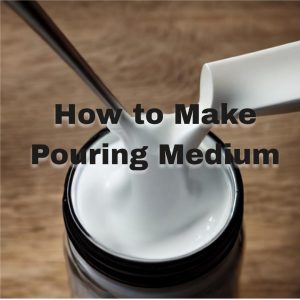Paintbrushes are essential tools for anyone who enjoys painting. However, if you don’t take proper care of your paint brushes, they can become hard and stiff, making it difficult to achieve the desired results. But don’t worry, there are ways to keep your paint brushes soft and in excellent condition.
One of the best ways is to clean them thoroughly after each use. This helps remove any excess paint or debris that can cause the bristles to become stiff. You can do this by using lukewarm water and mild soap to gently clean the bristles.
In this article, we’ll explore how to keep paint brushes soft, how to extend their lifespan and share some tips and tricks to help you maintain them in top condition.
Reasons Why Your Paintbrush Doesn’t Stay Soft
If you’re a painter, you’ve probably experienced the frustration of a paintbrush that just won’t stay soft. Here are some reasons why this might be happening:
- Improper cleaning: If you don’t clean your brush thoroughly after each use, paint can build up in the bristles and cause them to stiffen over time.
- Leaving it in water: While it’s important to clean your brush with water, leaving it soaking in water can cause the bristles to expand and lose their shape.
- Using harsh chemicals: Some cleaning solutions or solvents can damage the bristles and cause them to become stiff.
- Drying it improperly: If you don’t dry your brush properly, such as leaving it standing upright with the bristles pointing up, the water can collect in the ferrule and cause the bristles to stick together.
How to Keep Paintbrush Soft?
Keeping your paintbrushes soft and pliable is essential for achieving your desired painting results. Proper care and maintenance are critical to maintaining the longevity of your brushes.
Here are a few steps that can extend the lifespan of your paintbrushes and ensure they stay soft and pliable for all your artistic endeavors-
What to do before painting with the brush
There are a few things you should do before you start painting to keep your paintbrush soft and in good condition-
Pre-wash your brush:

First and foremost, you should pre-wash your brush. This is particularly important if you’re using a new brush for the first time, as it will help to remove any excess sizing or coating that may be present.
Simply rinse the brush with warm water and mild soap, and then gently massage the bristles with your fingers to ensure that they are thoroughly cleaned.
Soak the brush:
If you’re working with oil-based paints, you may also want to consider soaking your brush in linseed oil or mineral spirits before using it. This can help to keep the bristles soft and supple, which can make it easier to apply the paint evenly.
To do this, simply pour a small amount of the oil or spirits into a jar or container, and then dip your brush into the liquid. Be sure to shake off any excess liquid before you start painting.
Use the right paint:
Another important consideration is using the right paint for your brush. Different types of paint require different brushes, so it’s important to choose the right one for the job.
For example, natural bristle brushes are ideal for oil-based paints, while synthetic brushes work well with water-based paints. Using the wrong type of brush can result in a less-than-ideal painting experience, and can even damage your brush over time.
Use a brush conditioner:
Brush conditioners can help to keep your paintbrushes soft and pliable. Brush conditioners are designed to protect the bristles from becoming stiff and brittle, and can help to extend the life of your brush.
Simply apply a small amount of conditioner to the bristles before storing your brush, and it should stay soft and in good condition for your next painting session.
How to clean your brush properly
Proper cleaning technique is essential if you want to keep your paintbrush soft and in good condition. Here are some tips to help you clean your brush effectively-
Use warm water:
Start by rinsing your brush with warm water to remove any excess paint. It’s important to use warm water, as this will help to dissolve the paint and make it easier to remove.
Be sure to use gentle pressure when rinsing the brush, as using too much force can damage the bristles.
Use mild soap:
After rinsing the brush, add a small amount of mild soap to the bristles. You can use dish soap or another gentle cleaner to do this. Then, gently massage the bristles with your fingers to work the soap into the bristles.
This will help to remove any remaining paint or residue that may be present. Be sure to avoid using harsh chemicals or solvents to clean your brush, as these can damage the bristles and cause them to become stiff and brittle.
Rinse thoroughly:
Rinse the brush thoroughly with warm water, making sure to remove all the soap and any remaining paint. Be sure to avoid leaving any soap residue on the brush, as this can cause the bristles to become stiff and brittle over time, which can make it more difficult to apply the paint evenly.
Dry gently:
Finally, After rinsing the brush, it’s important to dry it. Gently pat the brush dry with a clean towel, and then reshape the bristles to their original shape. Once the brush is dry, you can store it in a safe place until your next painting session.
Common cleaning mistakes to avoid
- Avoid using hot water to clean your brushes as this can cause the bristles to lose their shape and become brittle.
- It is also important to never leave your paint brushes soaking in water or solvent for an extended period as this can damage the bristles.
- Use gentle pressure when rinsing the brush, as using too much force can damage the bristles.
- Avoid using harsh chemicals or solvents to clean your brush, as these can damage the bristles and cause them to become stiff and brittle.
- Avoid using a hairdryer or other heat source to dry the brush, as this can cause the bristles to warp or become damaged.
Choosing the right cleaning agent
Choosing the right cleaning agent for your paint brushes is essential to maintain their quality and prolong their lifespan.
For acrylic paint, it is recommended to use a gentle brush cleaner like the U.S. Art Supply Brush Cleaner and Restorer. It can effectively remove acrylic paint without damaging the bristles.
For oil paint, a more robust cleaning agent like Turpenoid Natural is suitable to dissolve the oils and pigments in the paint. After cleaning, it is crucial to rinse the brush thoroughly with warm water to remove any remaining cleaning agent.
To keep paint brushes soft and supple, adding a few drops of conditioner like “The Masters” Brush Cleaner and Preserver to the bristles before storing them is recommended. This conditioner is effective in cleaning and conditioning the brush to retain its shape and softness.
By using the right cleaning agent and conditioning your brushes regularly, you can extend the life of your paint brushes and maintain their quality for a long time.
Maintaining Soft Paint Brushes

Maintaining soft paint brushes is crucial for achieving the best painting results.
Here are a few techniques that will keep your paint brushes soft and in good condition for all your painting needs-
How to keep your paint brushes soft during a project:
To keep your paint brushes soft during a project, it is essential to keep them moist while you are working. You can do this by dipping your brush into a jar of water before dipping it into the paint. This will keep the bristles moist and prevent them from drying out during the project.
Additionally, make sure to rinse your brush with clean water periodically to remove any excess paint buildup. This will also help keep the bristles soft and pliable throughout your painting session.
Using a brush holder to keep your paint brushes upright and in good shape:
A brush holder is a great way to keep your paint brushes upright and in good shape when you are not using them. A brush holder can be a simple container filled with water or a specialized brush holder designed to hold multiple brushes.
Keeping your brushes upright in a brush holder will help prevent the bristles from bending or becoming misshapen while they dry, which can lead to a decrease in the quality of your painting.
Using a brush restorer during extended breaks between painting sessions:
If you plan on taking an extended break between painting sessions, it is important to use a brush restorer to help keep your paintbrushes soft and pliable.
A brush restorer is a specialized solution designed to remove dried paint from the bristles of your brushes. After using a brush restorer, make sure to rinse your brush thoroughly with clean water and reshape the bristles before storing it.
Properly cleaning and storing your paintbrushes after each use:
Properly cleaning and storing your paintbrushes after each use is essential for maintaining their softness and quality. To clean your brushes, rinse them thoroughly with clean water and use mild soap if necessary. Gently reshape the bristles and allow the brush to air dry in a brush holder or a flat surface.
Never store your brushes standing up in a cup or container, as this can cause the bristles to become misshapen. Instead, store them flat or upright in a brush holder, making sure that the bristles are not touching any surfaces.
FAQs
- How often should I clean my paintbrushes?
It’s best to clean your paintbrushes immediately after use to prevent the paint from drying on the bristles. If you’re working on a large project, you can clean your brushes periodically throughout the day. For oil-based paints, it’s especially important to clean your brushes thoroughly after each use.
- How do I remove paint stains from my paintbrushes?
To remove paint stains from your paintbrushes, first, remove as much paint as possible by wiping the bristles on a paper towel or rag. Then, clean the brush using an appropriate solvent or cleaner for the type of paint used. For oil-based paints, use mineral spirits or turpentine. For water-based paints, use soap and warm water. Scrub the bristles gently until the paint is removed.
- Can I store my paintbrushes in a plastic bag?
It’s not recommended to store your paintbrushes in a plastic bag as this can trap moisture and lead to mold or mildew growth on the bristles. Instead, store your brushes in a dry, well-ventilated area with the bristles facing up or suspended in a brush holder.
- How often should I condition my paintbrushes?
Conditioning your paintbrushes helps keep the bristles soft and pliable. It’s recommended to condition your brushes after each cleaning, or every few uses. Use a brush conditioner specifically designed for the type of brush you’re using, following the manufacturer’s instructions.
- How can I prevent the shedding of paintbrush bristles?
To prevent the shedding of paintbrush bristles, never pull or twist the bristles while cleaning your brush. Gently squeeze the bristles with a clean cloth or paper towel to remove excess water or paint. Also, avoid leaving your brushes in a solvent or cleaner for too long, as this can cause the adhesive holding the bristles to weaken.
- What is the best way to transport paintbrushes without damaging the bristles?
When transporting paintbrushes, it’s important to protect the bristles to prevent damage. Use a brush holder or wrap the brushes in a protective covering, such as a soft cloth or paper towel. Avoid placing heavy objects on top of the brushes or storing them in a cramped space where they can be crushed.
Wrapping Up
Knowing how to keep your paintbrush soft is crucial for achieving great painting results. By following the tips and techniques outlined above, you can keep your paintbrush soft and in good condition for all your painting needs.
Remember to always clean your brush thoroughly after each use, and use gentle cleaning agents and techniques to avoid damaging the bristles. With proper care and maintenance, your paintbrush can last for a long time and help you create beautiful works of art.
So, take the time to care for your paintbrush and enjoy the many benefits of soft and well-maintained bristles.
Preventing your paint brushes from becoming stiff requires regular maintenance. Discover how to clean dry acrylic paint off brushes in our detailed guide to keep them soft and ready for use.





